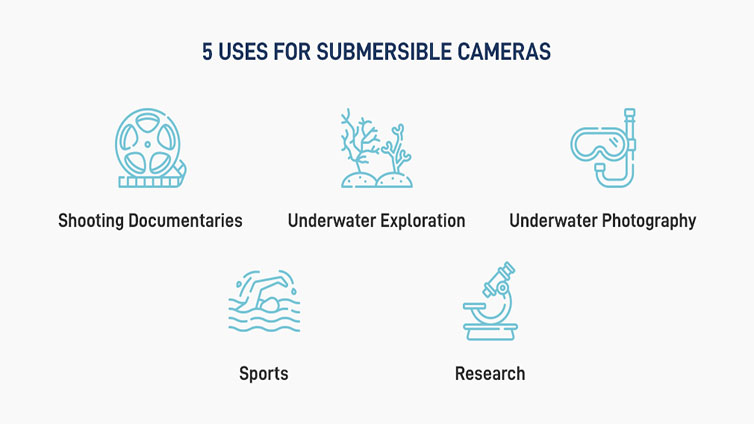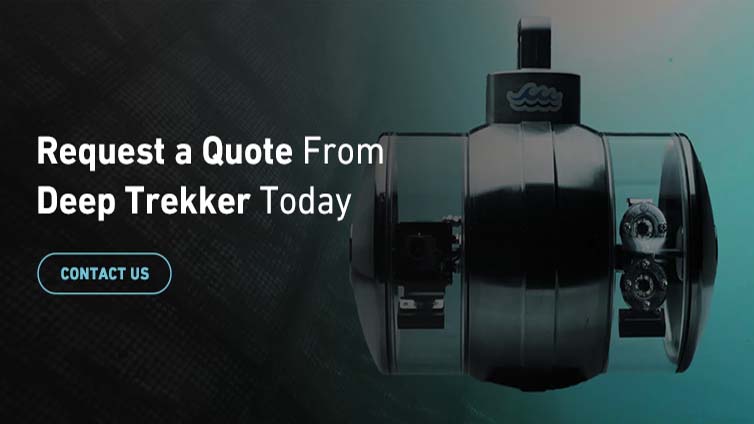Configure Now
Items in Your Cart0
0Items in Your Cart
Start building your packageShop Now
There are many reasons you may want to check out what's going on beneath the surface of the water, including to make sure all is well with a research project or to capture unique shots for an advertising campaign. To get those underwater photos, you'll need a camera that's waterproof and submersible. An underwater camera has a lot of uses, from monitoring marine projects to capturing images or video for documentaries and ads. Get to know more about submersible and sea life cameras so you can choose the equipment that will work best for your project.

A submersible camera, sometimes called an underwater camera, is a camera that works underwater, capturing video or still images beneath the surface. Usually, a submersible camera takes one of two formats. One type is a standard digital camera encased in a waterproof, submersible housing. As long as the camera is in the housing, it can safely go in the water, without damaging its components. Other types of submersible cameras are designed specifically for use underwater. Their housing is waterproof and often shockproof, so they can withstand certain amounts of pressure as well as exposure to water.
A submersible camera can be a compact camera, which looks like a standard point-and-shoot digital camera. Usually, compact cameras are meant for light use. They can get wet and can go underwater but won't survive a deep dive into the ocean. Another type of underwater camera is a drop camera. The camera lowers into the water while the person operating it remains on the surface. While the average scuba diver usually needs to exercise caution when diving to depths between 40 meters and 100 meters, a submersible drop camera can reach depths that are easily three times as deep.
Some drop cameras are tethered, meaning a cable ties them to the boat on the surface of the water. Others are untethered. They might have an anchor that pulls them down into the water. When it has finished taking photos, an untethered camera drops its anchor and begins to float back to the surface.
The world is different underwater than it is on dry land. Two of the biggest differences between the surface and the water's depths are light and pressure. At just one meter below the surface, seawater absorbs 60% of visible light. By 150 meters deep, 99% of visible light is gone. That means a submersible camera needs to have a good light source connected to it, otherwise, all the photos it takes or video it captures will come out dark.
Along with lights, some submersible cameras have filters on their lenses that color correct. Since red is the color that disappears first as you go into the water, many filters are red-orange in color. If a photographer uses a submersible camera to capture shots both in and out of the water, they will need to install a split filter on the camera lens, which accurately captures the part of the shot that's out of water as well as the part of the image beneath the surface.
When submerged, there is considerably more weight and pressure on a camera than when it is on dry land. At just 10 meters below the surface, pressure is twice as much as it is at surface level. At 100 meters, the pressure has increased to 10 times what it is on the surface. Submersible cameras have depth ratings that determine how deep they can go without being damaged.
The operation of a submersible camera depends on its style. A compact camera works pretty much the same as a point-and-shoot meant for use on dry land. The photographer looks through the viewfinder, lines up the shot and takes the picture. If the camera is underwater at a depth beyond its depth rating, there's a chance the button won't work.
When using a drop camera, the person operating it remains above the water. The camera connects to a handheld controller, which lets the operator adjust the angle of the camera's lens and the camera's position in the water.

Who uses underwater photography? Everyone from professional photographers and filmmakers to hobbyists. Take a look at some common uses of submersible cameras.
Let us help find the right ROV for your underwater projects and applications

July 5th, 2025
Deep Trekker’s new Tampa facility brings faster ROV repairs, in-stock parts,...
June 11th, 2025
Equipped with sonar and DVL, Deep Trekker ROVs are helping SES...
April 22nd, 2025
FLAIMS 2024 showcased SAR teams integrating ROVs, sonar, and drones, advancing...